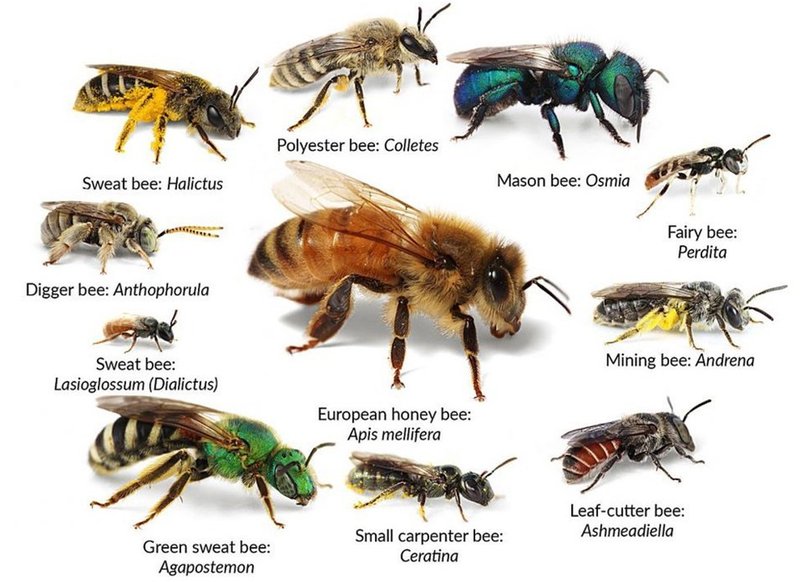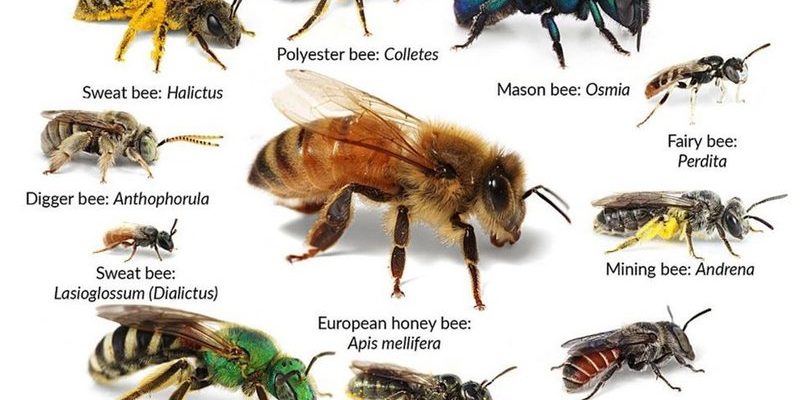
Sweat bees, with their name stemming from their attraction to human sweat (yes, really!), may not be as well-known as honeybees, but they are just as important for pollination. Let’s dig into what sets sweat bees apart from other bee species, helping you understand their unique qualities and their contributions to nature.
What Are Sweat Bees?
Sweat bees belong to the family Halictidae, which is one of the largest groups of bees. They are typically solitary or communal, meaning they don’t live in hives like honeybees. Instead, they may share nesting sites with a few others. These bees are often small—ranging from about 2 to 15 millimeters in length—and can be found in various colors, from shiny green and blue to dull brown.
Here’s the thing: sweat bees are known for their attraction to the salts in human sweat. When you’re out enjoying a hot day, you might notice these little guys landing on your skin, making you wonder if they’re trying to snack on your sweat, which they are—sort of. They don’t sting unless provoked, and even then, their sting is often mild compared to other bees.
Physical Characteristics of Sweat Bees
Sweat bees are quite the lookers in the bee world. They have a sleek, metallic appearance that can make them resemble tiny jewels among the flowers. One thing you might notice is their size. Unlike honeybees, which are larger and fluffier, sweat bees are usually smaller and more slender.
Their bodies are often covered in fine hairs, which help them collect pollen as they flit from flower to flower. You might recognize some common types, like the *Agapostemon* and *Lasioglossum*, which can come in vibrant shades of green and blue.
Another interesting point? Sweat bees can be mistaken for wasps due to their size and shape. However, unlike wasps, they have fuzzy bodies and don’t exhibit aggressive behavior unless threatened.
Habitat and Nesting Behavior
Sweat bees have a diverse range of habitats. They can be found in gardens, fields, and even urban areas, making them quite adaptable. You might spot them buzzing around flowers, especially in the early spring and summer months when flowers are abundant.
When it comes to nesting, sweat bees are generally solitary. Many species create nests in the ground, using tiny tunnels to house their young. Others might prefer to nest in existing cavities, like old wood or even the hollow stems of plants. They lay their eggs in these nests, and the larvae feed on pollen and nectar stored by the mother.
This nesting behavior is different from that of honeybees, which live in large, structured colonies. If you’re thinking about how to attract sweat bees to your garden, planting native flowers can create a welcoming habitat where they can thrive.
Role in Pollination
You might be wondering why sweat bees matter. Well, these little insects play a vital role in pollination, helping many plants reproduce. While they might not be as effective as honeybees when it comes to volume, they are superb pollinators for certain types of flowers, especially those with smaller blooms.
Sweat bees tend to visit a wider variety of flowers than honeybees, which is why they can be found in gardens or wildflower meadows. Because they often work alone, their pollination efforts can be more targeted and effective for specific plants.
This means that the next time you see a sweat bee hovering around your flowerbeds, know that they’re hard at work, contributing to the health of the ecosystem and the food supply we all rely on.
Comparing Sweat Bees to Honeybees
Let’s dive into a direct comparison between sweat bees and the more familiar honeybee. With honeybees being social creatures, they live in large colonies and work together to maintain the hive, produce honey, and care for the young. Sweat bees, on the other hand, are usually solitary, focusing on their own nests and offspring.
Here’s a quick breakdown of their differences:
| Characteristic | Sweat Bees | Honeybees |
| Social Structure | Solitary or communal | Highly social |
| Appearance | Small, metallic colors | Fluffy, larger |
| Nesting | Ground or plant cavities | Hives |
| Sting | Mild, rarely aggressive | Potentially aggressive, more painful |
Understanding these differences helps illustrate just how varied the world of bees really is. Each type, whether it’s a sweat bee or a honeybee, has its unique role and adaptation that contributes to the overall health of our ecosystems.
Common Misconceptions About Sweat Bees
There are a few misconceptions about sweat bees that can lead to confusion. For starters, many people think that all bees are aggressive and likely to sting. While it’s true that honeybees can be protective of their hives and may sting if they feel threatened, sweat bees are generally quite docile. They are more interested in finding food sources than bothering humans.
Another common myth is that sweat bees only target humans for sweat. In reality, while they are attracted to the salts and moisture in sweat, they primarily seek nectar and pollen from flowers. So don’t worry too much if you see them buzzing near you—give them space, and they’ll be on their way!
How to Attract and Protect Sweat Bees
If you want to invite sweat bees to your yard, consider planting a variety of native flowers. They’re drawn to colorful, fragrant blooms that provide nectar and pollen. Flowers like aster, sunflower, and wildflowers are great options.
Furthermore, avoid pesticides that can harm these helpful pollinators. Providing a safe habitat with bare soil for nesting and a diverse flower garden can make your space a haven for sweat bees.
Protecting these creatures is crucial, as they contribute greatly to our food systems and biodiversity. As you nurture these little guests in your garden, you’ll also be supporting the environment.
So, there you have it! Sweat bees may not be as famous as their honeybee cousins, but they’re essential players in our ecosystem. With their unique nesting habits, important role in pollination, and docile nature, these tiny insects deserve a spot in our hearts and gardens.
Next time you spot a sweat bee enjoying your flowers or landing on your skin, take a moment to appreciate its contributions. By understanding the differences between sweat bees and other types of bees, we can all be better stewards of the environment, protecting these wonderful pollinators for generations to come.

